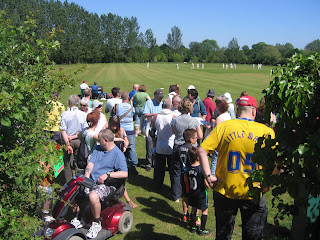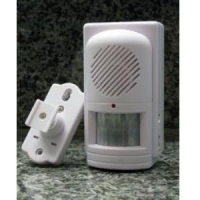One of my interests - or should I say concerns - is road safety. I belong to the Institute of Advanced Motorists and, over the years, have spent many hours on the road as part of my business, so am well aware of the need for driver education. I believe this is infinitely more effective than more and more regulations heaped upon the hapless motorist.
Reversing
As I was about to drive away from the council offices the other day, I watched a car reverse out of a parking space and reflected on the unnecessarily increased risk this manoeuvre entailed, when it is so much easier - and safer - to reverse in and drive out forwards.
These photos show my view as I waited to drive out forwards - an easy view to the left, but a restricted view to the right. Had I been reversing out, facing in the opposite direction, my view would have been totally, rather than partially, obscured by the car in the lower photo. As it was, the rear of this car partially obscured my view to the right. If he had reversed in, however, I would have had as a clear a view as I had to my left.
This is what Advanced Driving UK says:
Reversing your Car
September 22nd, 2007. Posted in Motoring & Driving TipsIn a car park, do you reverse into a parking space and drive out, or drive in and reverse out? The next time you are in a car park, have a look around and see how many people reverse into the space. You will probably find that most people actually drive in and reverse out. There is no doubt this may be safer/more convenient if the spaces are angled, when you have to load/unload items from the boot or if it would cause inconvenience to other road users.
On the other hand, reversing into the space provides you with several advantages. The first of these is that it is safer to reverse into somewhere you can see into (the parking space), rather than reverse out, into somewhere you can’t (the line of moving traffic). Many people find that it takes them a few minutes to settle into “driving mode” when they start their journey. Therefore it doesn’t make sense to undertake a potentially high risk manoeuvre such as reversing when you are not concentrating fully. It is also easier to control a car going forwards, rather than backwards when the car is first started and the automatic choke is activated. The reduction in wear and tear on you and the car is useful too – plus the fact you can pull away immediately while the engine is cold, rather than labour it doing a reversing manoeuvre.
From a security point of view, reversing close to an object such as a wall can make it more difficult for thieves to access your boot. If you need to exit a parking space quickly for personal security, driving out provides you with better acceleration and improved vision.
Over the next week why don’t you try reversing into a parking space? You may find it helpful if you have electric mirrors, to lower your left (nearside) mirror as this will provide you with a guide to your lateral position. Another option where all the spaces run in parallel rows is to line your car up with the space in front and reverse back in a straight line. This should automatically position you in the centre of the space.
The Highway Code says: "When using a driveway reverse in and drive out if you can," so this would also apply to car parks.
Parking at night
Did you know it is illegal to park facing the wrong way at night? The Highway Code says:"You MUST NOT park on a road at night facing against the direction of the traffic flow unless in a recognised parking space." That means with white lines around it. Traffic attendants are very quick to issue parking for minor infringements but this parking the wrong way round, which could be very dangerous, is totally ignored.
It can be dangerous because people often leave their headlights on when they are parked on the wrong side and cause dazzle, making it impossible for oncoming drivers to see an open door or even someone standing in the road. It can also be dangerous to pull across oncoming traffic in the dark, with your headlights on.
I don't want to see any more laws passed, but I would like to see this one enforced.
Daytime Parking. In fact, I try not to park against the traffic flow at any time as the Highway Code says:
If you have to stop on the roadside:
Daytime Parking. In fact, I try not to park against the traffic flow at any time as the Highway Code says:
239
Use off-street parking areas, or bays marked out with white lines on the road as parking places, wherever possible.If you have to stop on the roadside:
- do not park facing against the traffic flow.
a





 North Stoneham Park
North Stoneham Park













.jpg)


